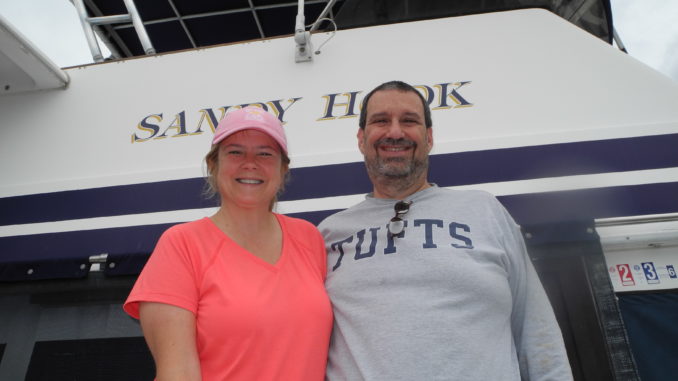
Our Georgia crew wanted to get out of the landlocked lakes and see what is like to deal with tides, sandbars, drawbridges and anchoring overnight. South Florida is where it can all happen with Captain Chris Yacht Services! you want to learn how to cruise and live aboard join us in Fort Pierce, FL.
(NOTE: We no longer charter our boat but are pleased to come aboard YOUR boat anywhere for personal training with you and your mate)
Chuck and Leigh boarded Sandy Hook at 6 pm to enjoy our traditional southern hospitality and dinner. Next morning after a hearty breakfast on our back deck we establish their specific goals. This is so important as we have 4 days aboard and NO ONE ELSE to share their training time.
Starting with the safety aspects of cruising we discuss our safety equipment and other items that are available for offshore. The basics of navigation using paper and electronic charts is woven in to the morning class work before we switch gears to keep things interesting. Fun on the docks is not complete unless we practice line handling. It’s all in how you prep the lines before you toss ‘em. And let’s not forget to check the below deck systems and fluid levels in the engine room. All is OK so we focus a bit more on docking and undocking to be prepared when we return then off we go!
While cruising each day we selected an anchorage then set the hook. Anchor detail does not have to be messy and we were fortunate the bottom was sandy and the anchor was clean when it came up. While Chuck and I deal with the anchor Leigh maneuvers the twin engine boat by using the engines in opposing directions to get a tight turn to help us raise the anchor. Hole in the Wall is a favorite anchorage near Vero Beach and we enjoy the quiet sunsets with wake protection from the nearby ICW. Another comfortable location is Faber Cover, protected 360 degrees from any winds. Unfortunately this anchorage brings up a bit more mud!
One of the differences between coastal and lake boating is tides, not just the high and low tide but also the tidal current flow. Fort Pierce Inlet only has an 18” -24” tidal range but also has about a 2 knot tidal current. You need to be alert and watch the daymarkers, buoys and bridge pilings to see if there is a tidal current, the direction and the speed. This is important when cruising through a narrow opening on a bridge. Not a problem, just be prepared.
Speaking of tidal current look at the photos showing our 6.6 knot boat travelling at 8.1 knots, this proves the tidal current is a force to be aware of. Did you notice the water depth on those 2 GPS Chartplotter photos. Same time and 2 different depths, 6.7 feet under keel and 20.6 feet under keel. WOW, yes that is a powerful current! Now we have to be aware that the cross current does not take us off course. When we exit the channel into the ocean we need to follow the range markers and stay on course. No big deal, all in a day of cruising.
And when we get to our home dock we meet a transient Texas couple aboard their Kadey Krogen 48 Trawler. A few docktails and we now have more new friends.
Come join us aboard Sandy Hook to start Living YOUR Dream.
